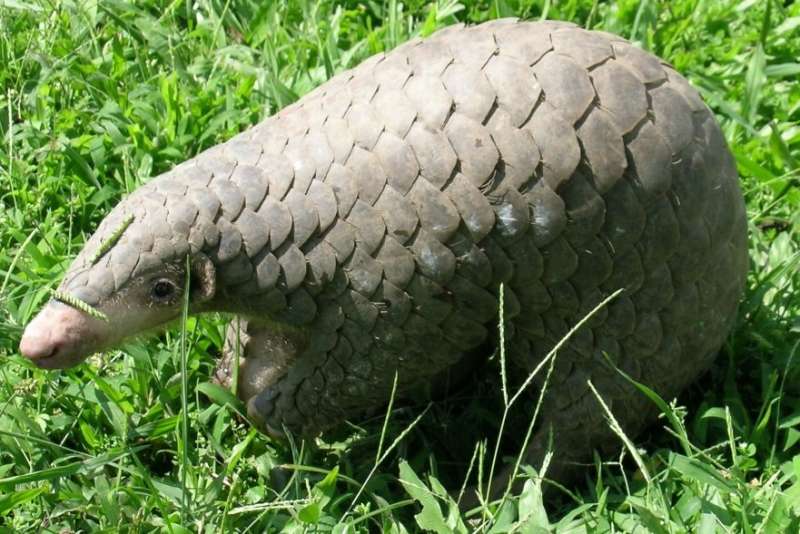August 22, 2018 report
Study of Chinese pangolins shows their natural habitat has been cut in half

A team of researchers from China and the U.K. has found that the natural habitat available for the Chinese pangolin has been cut in half over the past half-century. In their paper published in Proceedings of the Royal Society B, the group describes their study of the mammal, its habitat and its chances for survival.
Pangolins are a type of anteater—they have scales, which make them unique. They are also highly valued in many Asian cultures both for their meat and scales, which are used to make medicines—they are the most illegally trafficked mammals in the world today. Because of their high value, pangolin population numbers have been declining for many years due to human hunting. The researchers with this new effort noticed that no one had conducted a long-term population study of the creatures—believing such data would be needed to make proper conservation effort decisions, they embarked on one of their own.
To gain a better picture of population levels and where the animals have lived in China, the group gathered historical documents (news articles, published literature and interviews) and used the information to construct ecological niche models. The models allowed them to see where pangolins have lived over the years 1970 to 2016, and how many of them lived in any given area.
The researchers report that they found the range in which pangolins live has dwindled dramatically, to roughly half of what it once was. They note that today, the pangolins are confined mostly to the Wuyi mountain range. They also found that the reduction in population numbers could not be blamed on global warming—it has been due mostly to humans killing them directly. They noted that over the past 50 years, human transportation networks in the region have improved, making it easier to transport captured or killed pangolins out of the area.
On a more promising note, the researchers report that though all eight species of pangolins are threatened, measures taken by various governmental entities in recent years have led to the creation of safe havens for the mammals. Such efforts, they believe, are likely to prevent most from going extinct.
More information: Li Yang et al. Historical data for conservation: reconstructing range changes of Chinese pangolin (Manis pentadactyla) in eastern China (1970–2016), Proceedings of the Royal Society B: Biological Sciences (2018). DOI: 10.1098/rspb.2018.1084
Abstract
The Chinese pangolin (Manis pentadactyla) has long suffered from intense exploitation driven by consumer demand for medicinal use and food. Effective conservation management is hampered by insufficient data on pangolin status and distribution. We integrated ecological niche modelling with long-term ecological records at the local scale (e.g. from local historical documents, grey and published literature and interviews) to estimate the magnitude of potential distribution change of the Chinese pangolin in eastern China (Fujian, Jiangxi and Zhejiang provinces) over time. Our results suggest that the range of the species decreased by 52.20% between the 1970s and early 2000s and that the population is now mainly confined to the Wuyi Mountains. This reduction in potential distribution range is attributable to anthropogenic pressures. According to our conservation prioritization analysis, the priority conservation area for the Chinese pangolin in eastern China is 51 268.4 km2, 5.62% of which is covered by nature reserves. There are 18 nature reserves and 46 prefectures which are priority areas for conservation in China. The priority-level nature reserves and prefectures in eastern China are mainly located in the centre of the Wuyi Mountains, and areas declared important tend to be around the Wuyi Mountains. We propose several actions to improve the conservation status of this species: establish or enlarge nature reserves, ensure local governments at the prefecture level prioritize conservation management and encourage local communities to participate in pangolin conservation.
Journal information: Proceedings of the Royal Society B
© 2018 Phys.org



















